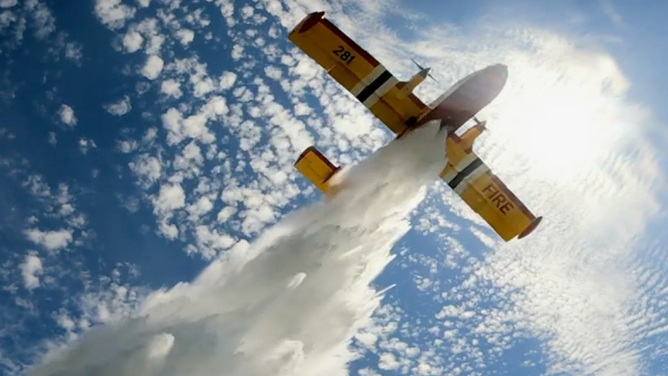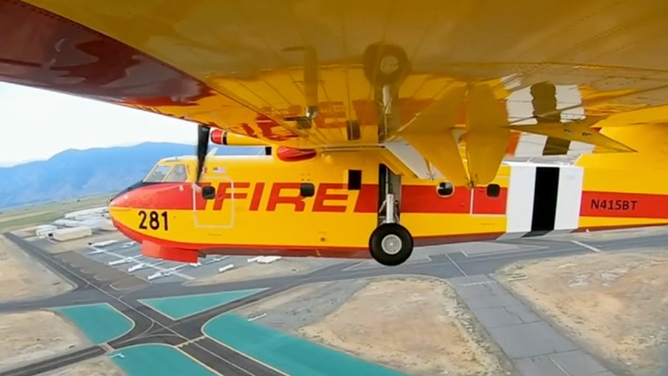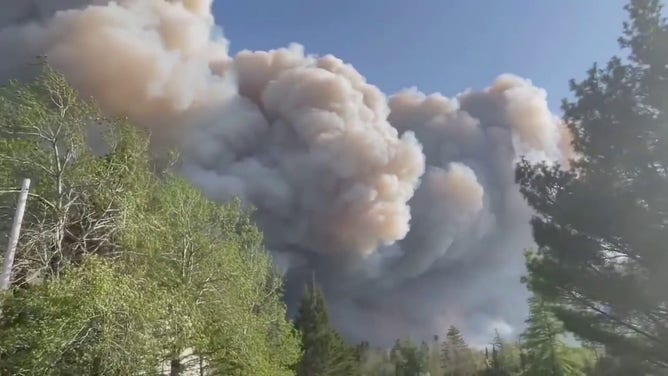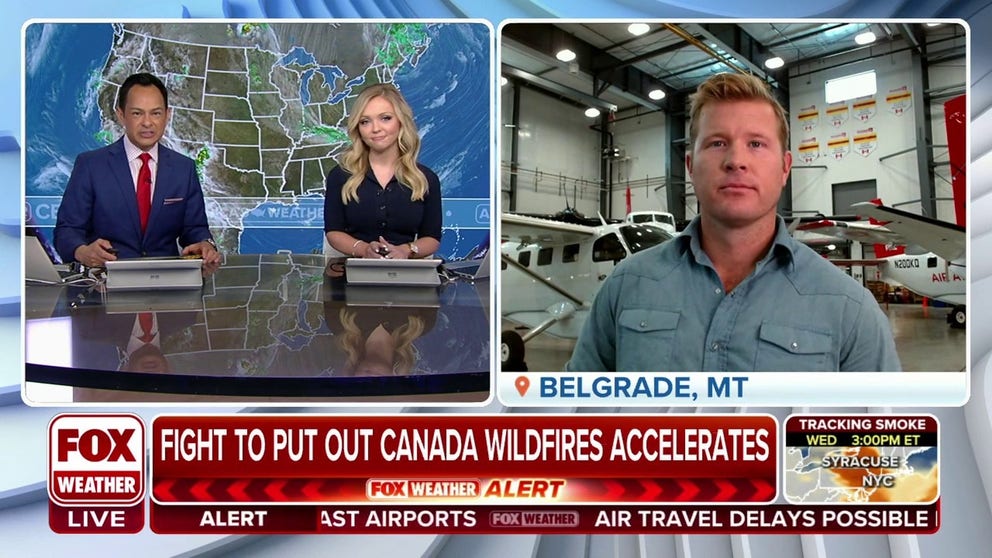Fighting Canadian wildfires: Special aircraft used to extinguish flames
More than 400 fires are actively burning across Canada, according to the Canadian Interagency Forest Fire Centre.
Fighting flames from the sky
How an aerial firefighting company is helping to combat the Canadian wildfires
With hundreds of wildfires burning across Canada, pilots are trying to extinguish some of the flames by using an aircraft called the Super Scooper.
Produced by Bridger Aerospace, the Super Scooper is an enhanced aerial firefighting aircraft that can scoop more than 1,400 gallons of water per day to drop onto fires.
The Super Scooper is the only purpose-built firefighting aircraft in history, according to Bridger Aerospace CEO and pilot Tim Sheehy.
"It was designed, produced, manufactured for one purpose and one purpose only, and that's to fight wildfires," he said.

The Super Scooper drops water from the sky.
(Bridger Aerospace / FOX Weather)
The aircraft flies to water sources, such as lakes, rivers, reservoirs or the ocean, near a fire to scoop up water. Sheehy said the aircraft only needs about a mile-long, straight scoop line to retrieve water from a water source.
Bridger Aerospace said the aircraft could scoop up to 1,412 gallons of water in approximately ten seconds. With water in tow, the aircraft can quickly fly back to the fires to drop the water.
Sheehy noted that the Super Scooper sometimes delivers more than 100 scoops of water a day. If the water source is near a wildfire, the aircraft can drop 100 thousand to 200 thousand gallons per aircraft onto a fire in one day.

The Super Scooper takes off.
(Bridger Aerospace / FOX Weather)
One of the biggest challenges the Super Scooper and its pilots face is not the fire – rather, it’s the smoke and humidity.
According to Sheehy, the eastern half of Canada and the U.S. usually have higher humidity levels than the western regions of those countries. When the eastern regions experience wildfires, the smoke they produce mixes with the greater humidity and creates a smoke layer that stays in place.
SEE EERIE ORANGE SKIES OVER NEW YORK CITY AS CANADIAN WILDFIRE SMOKE BLANKETS NORTHEAST

An image showing smoke filling the air on May 30, 2023, above Nova Scotia, Canada, as wildfires continue to scorch the landscape.
(@bigmacdaddy\_eth via Storyful / FOX Weather)
The smoke layer can be so persistent that it can severely limit the visibility around an affected area. This prevents the aircraft, which must be able to fly close to the tree line and other aircraft to fight fires, from taking off.
"That visibility is a very serious safety challenge for the aircrews," Sheehy said.
More than 400 fires are actively burning across Canada, according to the Canadian Interagency Forest Fire Centre.
